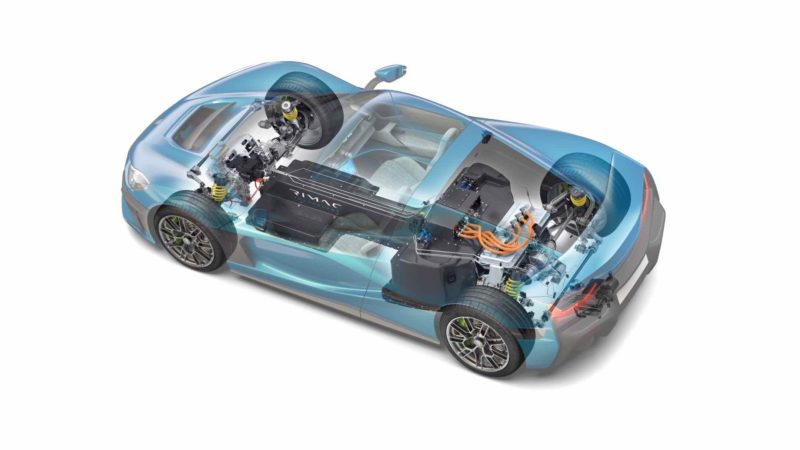Croatian carmaker Rimac Automobil took its Rimac Nevera electric hypercar to the drag strip at Famoso Raceway in Bakersfield, California, last week, where it broke the world record for a quarter-mile drag in a time of 8.582 seconds, reaching a top speed of 167.51mp/h, or around 270km/h.
Back in June, the Rimac Nevera set an unofficial world record for the fastest accelerating production car, but thanks to its stop at the Famoso Raceway and attended by Raceway officials and the experts from DragTimes.com, the quad-motor electric hypercar can now boast the official record.
Driven by Brooks Weiselblat from DragTimes on standard Michelin Pilot Sport 4S tires – the Rimac Nevera blasted out the new world record with an air temperature of 37°C/98F and track temperature of 65°C/149F.
“With its Launch Control engaged – done by simply putting your left foot on the brake and flooring the accelerator – the Nevera prepared to unleash the full force of its 1,914hp powertrain through four separate electric motors,” Rimac said in its official press release announcing the world record.
“Having lifted a foot off the brake, the Nevera’s advanced control systems, Including Rimac All-Wheel Torque Vectoring 2, constantly monitored which wheels had the most grip, portioning out the power to minimize wheelspin and maximize acceleration as it launched down the strip.”
DragTimes have a great 23-minute video chronicling the lead-up to and the drag record itself that is definitely worth watching if you’re interested in the Nevera.
“This was our first test on a VHT (glued) surface, so we did not know what to expect,” said Miroslav Zrnčević, Rimac Automobil test and development driver. “At first we were hitting less than expected ¼ mile times (8,7 and 8,8 seconds) than we did on a normal, non-prepped surface in Europe.
“The track temperature was 65°C and we had to do some adjustments. Our traction control learns the surface on each run and adjusts the torques on the wheels. After some adjustments and different tire warm-up strategies we managed to get better results.
“Brooks helped with his experience of staging the car and we managed to set the world record for the fastest accelerating production car and also beat our own 1/4 mile record. Still, we are confident that the Nevera has much more to give and that we can go even quicker with more experience and testing on this kind of surface. We will be back.”
The Rimac Nevera – originally known as the Rimac C_Two, and lavished with praise by 2016 Formula 1 champion Nico Rosberg a year ago – was officially unveiled at the beginning of June. With a price tag of €2 million ($A3.2 million, converted), the Nevera is named after the sudden storms that can race across the Mediterranean Sea and across Croatia.
Boasting a mouth-watering top speed of 415km/h (258mp/h), the all-electric Nevera has four bespoke surface-mounted permanent magnet motors driving the wheels, delivering 1,914-horsepower and 2,360Nm of torque.

“Our business started with a BMW 3 Series that I had converted to electric power, which went on to set a number of FIA acceleration records,” said Mate Rimac, Founder and CEO.
“But what we have produced today is on a completely different level. The Concept One, back in 2011, was the fastest accelerating EV in the world, running the quarter-mile in 9.9 seconds. We’ve now broken that record with a standard production car by 1.4 seconds.
With four independent motors, each individually controlled, we have so much flexibility over how the car accelerates and corners, giving us a huge advantage over any combustion-engined vehicles.
“But Nevera is about so much more than speed. With the largest battery pack ever fitted to a production car, it can travel 340 miles on a single charge.
With in-house-developed Rimac All-Wheel-Torque Vectoring 2 it’s as agile as it is fast, and with electrically adjustable dampers and active aerodynamics it’s comfortable and quiet on a cruise, and a performance machine on a track.”
Joshua S. Hill is a Melbourne-based journalist who has been writing about climate change, clean technology, and electric vehicles for over 15 years. He has been reporting on electric vehicles and clean technologies for Renew Economy and The Driven since 2012. His preferred mode of transport is his feet.

